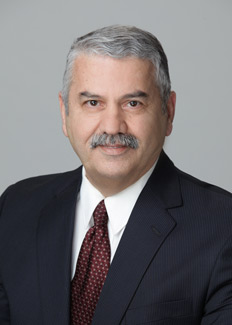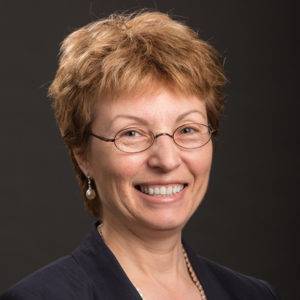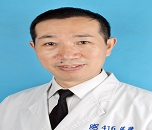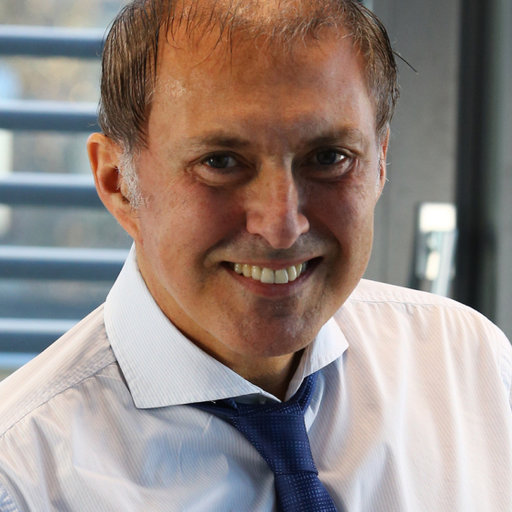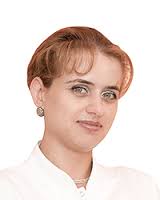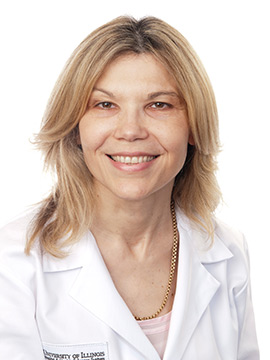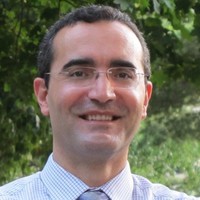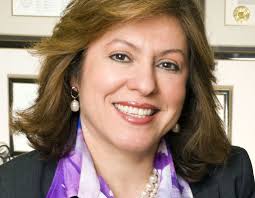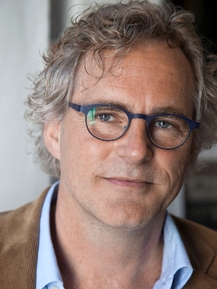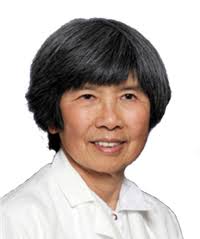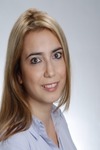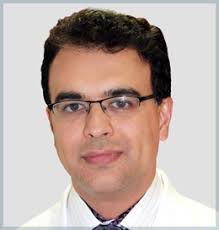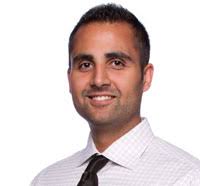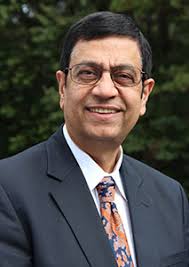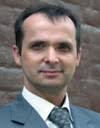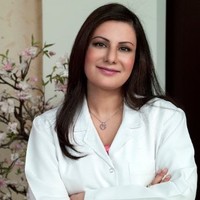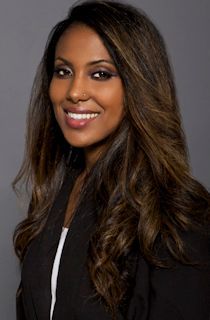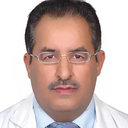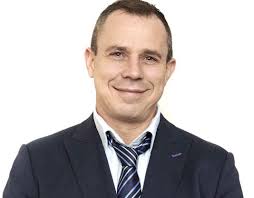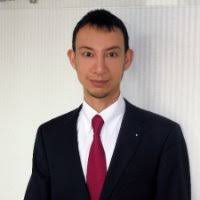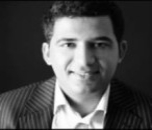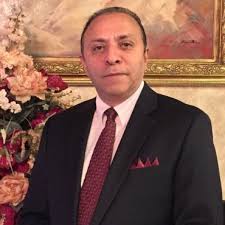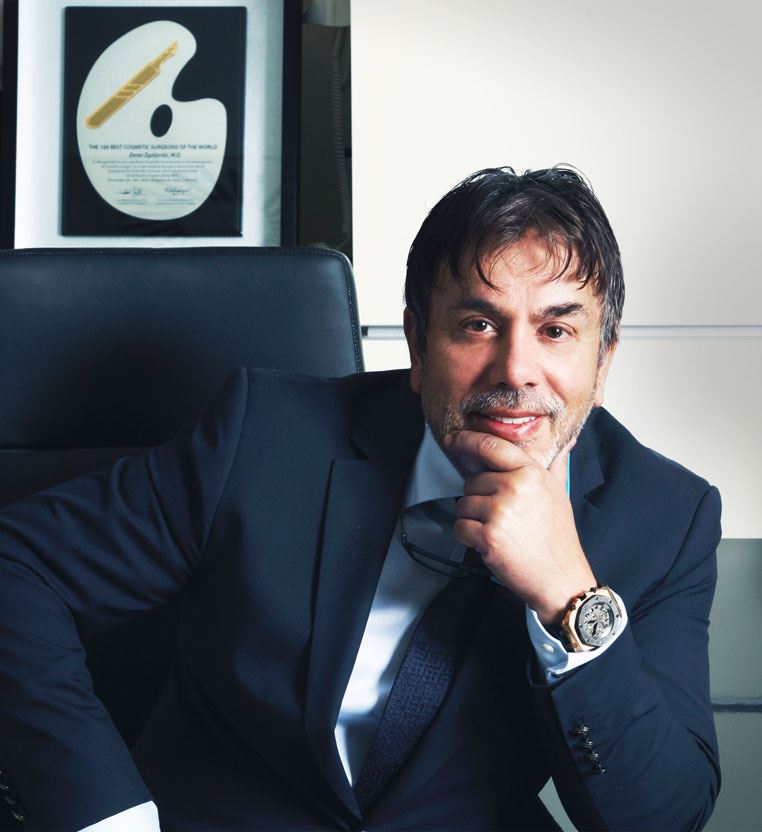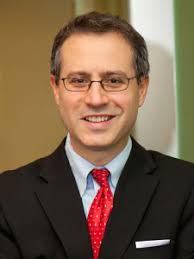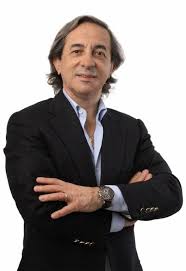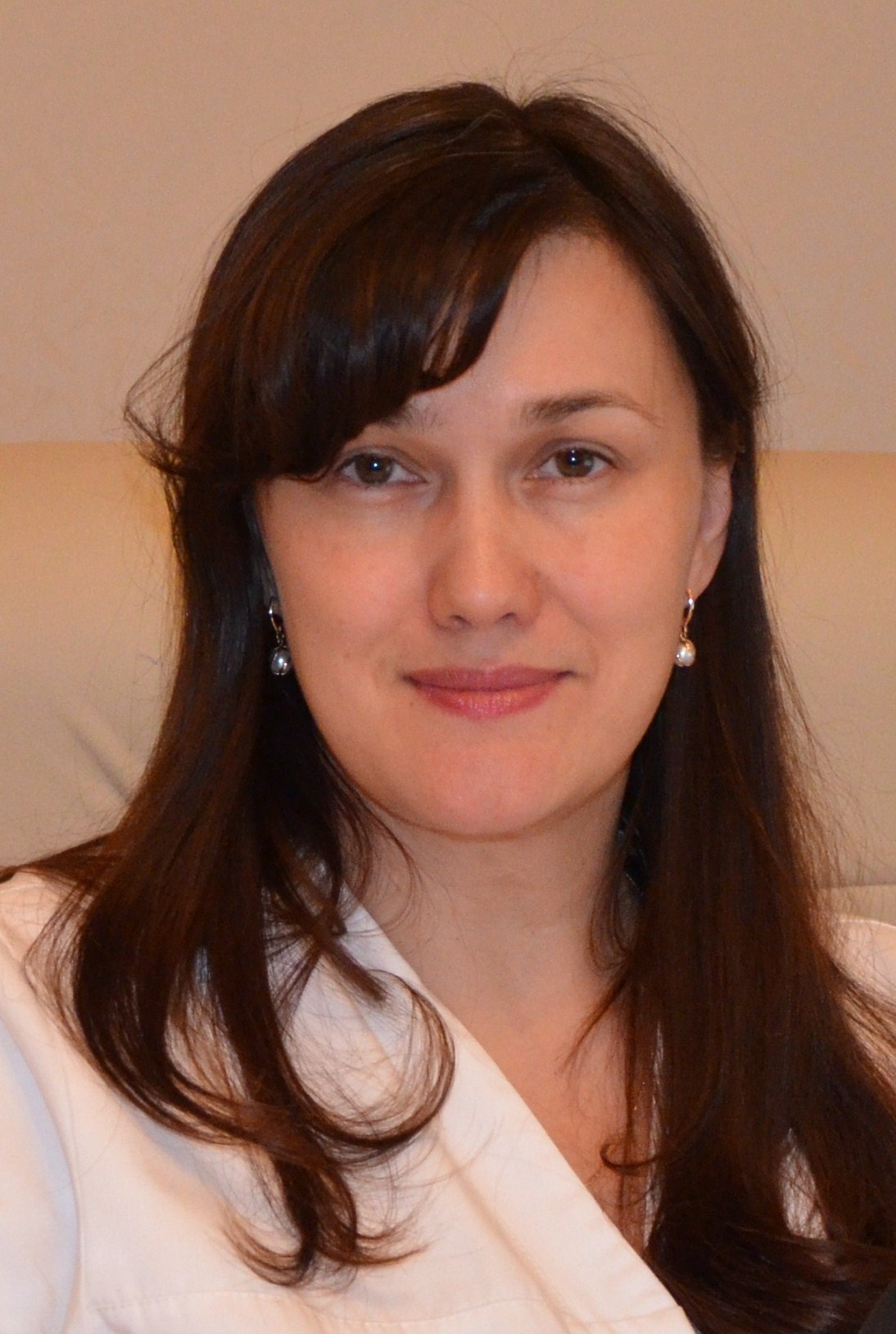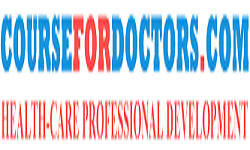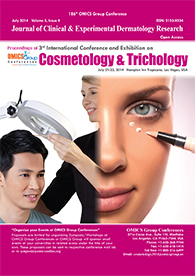Theme: The Science of Skin and Body Care
Skin Body 2018
INTERNATIONAL DERMATOLOGY CONFERENCE: SKIN AND BODY welcome all the attendees, speakers, sponsor’s and other research expertise from all over the world, which is going to be held during November 26-27, 2018 in Bali, Indonesia. We are very much honored to invite you all to exchange and share your views and experience on “The Science of Skin and Body care”.
The science of skin and body care conference mainly deals with the research, diagnosis, and treatment of conditions related to skin, hair, and nails. Dermatologists are medical doctors who trained in this area for many years. Disorders of skin, hair, and nails fall within the area of a dermatology. This branch is divided broadly into medical and surgical fields. This conference focuses on skin cancer, skin diseases, allergy symptoms, dermatological diseases, clinical dermatology and cosmetic dermatology. In the recent time, the research in dermatology reached to another height which comprises clinical research, Research techniques for diagnosis of the dermatological diseases and new therapy and delivers treatments.
ME Conferences organizes 1000+ Global Events Every Year across the USA, Europe & Asia with support from 1000 more scientific societies and Publishes 700+ Open access journals which contain over 100000 eminent personalities, reputed scientists as editorial board and organizing committee members.
Why to attend???
This conference will explore and focus on the Advances in Dermatology, Trichology, Immuno Dermatology, Skin pigment disorders, Skin abnormalities, Several Dermatological procedures, Side effects of cosmetics, Current research in herbal cosmetology, Potential risks in cosmetic treatments, Acne pigmentation and to meet target market with members from all around the world learning regarding dermatology concerns, best chance to achieve the most important assemblage of participants from the Universities, Research Institutions, and Hospitals. World-renowned speakers, the most recent techniques, developments, and the newest updates in Dermatology are hallmarks of this conference.
TARGET AUDIENCE:
- Dermatologists
- Trichologists
- Advertising Companies
- Surgeons
- Researchers
- Scientists
- Directors
- Entrepreneurs
- Business delegates
- Cosmetics companies and Clinics
- Skin care institutions
- Dermatology Faculty
- Medical Colleges
- Dermatology Associations and Societies
- Beauticians and Spa professionals
- Training Institutes of skin and body care
- Cosmetology training institutes
- Pharmaceutical Industries
- Healthcare Industries
- Fitness trainers
- Manufacturing Medical Devices Companies
- Product development and marketing professionals
TRACK 1: Skin and Body Fitness
Most commonly fitness helps to maintain your skin and body strong and glow. According to the Centres for disease control and Prevention (CDC), physical condition is outlined as the ability to hold out daily tasks with vigor and applications. Based on this definition, fitness involves everything from getting out of bed to hiking to performing CPR. Depending on the source, the components of fitness vary considerably. There are different types of components in fitness. They are muscular strength, muscular power, flexibility, balance, body composition, and speed. This requires proper learning through each structured exercise and leisurely activities. A healthy diet can be compared to proper home care for the skin, and an effective personal training session can be compared to an effective professional skin care treatment. To maximize results in the body, you must have a combination of both – exercise and a proper diet. To maximize results in the skin, a combination of professional skin care treatments and proper home care will yield optimum results.
TRACK 2: Therapies for Skin and Body
Therapies can help to stimulate scleroprotein production, repair broken skin cells, and treat unwanted microorganism in your skin cells by applying high light-weight energy to the skin. This treatment offers a secure, gentle and non-invasive suggests that to calm skin condition breakouts. In this treatments are basically a facial for your whole body and leave your skin feeling smooth and soft. The concept behind a body treatment is that necessary to cleanse, exfoliate, and hydrate the skin on your body. However, it will particularly be useful in the winter because it moisturizes skin once it's generally dry and flaky. The most popular body treatment is a body scrub, sometimes called a body polish, salt glow or sea-salt scrub. This is an exfoliating treatment that takes place on a massage table covered with a sheet and a large, thin piece of plastic. Various essential oils or scrub materials are used. You might get an orange blossom/peppermint salt glow or a cucumber salt glow, or a body scrubs done with coffee grounds, finely ground pecan shells or Napa Valley grape seeds.
TRACK 3: Diagnosis for Skin and Body Care
In order to diagnose a skin lesion, a skin doctor can need to conduct a full physical test. It is mainly caused by viruses, bacteria, fungus, and diseases. To verify a diagnosis they can take a skin sample, perform a diagnostic test of the affected area or take a swab from the lesion to send to a research lab. A variety of skin tests is also performed to diagnose skin allergies, microorganism or fungous skin infections and alternative issues affecting the skin. Skin tests are also performed to inform the distinction between malignant (cancerous) cells and benign (non-cancerous) growths. Skin disorders vary greatly in symptoms and severity. They can be temporary or permanent and may be painless or painful. To diagnose skin conditions, doctors typically consider a person's medical history and physical symptoms. Assessing the size, shape, location, and color of bumps, blisters, and rashes can help doctors pinpoint the exact cause. Other non-skin symptoms may offer clues as well. Sometimes doctors must remove a growth or take a skin sample for examination under a microscope.
TRACK 4: Clinical and Therapeutic Dermatology
Clinical dermatology encompasses all the problems associated with skin, hair, and nails. Skin covers more than 90% of the body while hair and nails constitute another 8%. A clinical dermatologist treats all diseases and medical conditions associated with skin, hair, and nails. Clinical Dermatology is a core section designed specifically for doctors and health practitioners with a special interest in dermatology covering all aspects of the life. This section provides the most practical and inclusive information on analysis, treatment, and care of skin disorders.
Therapeutic Dermatology is an area that offers propelled treatment for dermatologic related issues, including extracorporeal photopheresis for the treatment of cutaneous Immune system microorganism lymphoma including mycosis fungoid and Sezary disorder. There are various types of therapies that may be used in the management of dermatologic conditions. These can be broadly categorized as topical agents, dressings, systemic agents, laser and photodynamic therapy, and cryosurgery.
TRACK 5: Cosmetic Dermatology
Dermatologists have been leaders in the field of cosmetic surgery. Some dermatologists complete fellowships in surgical dermatology. Dermatologists perform procedures such as laser hair removal, acne removal, skin tightening via injections, facelifts, blepharoplasty, and liposuction. Cosmetic dermatology entails the diagnosis, treatment, and prevention of skin conditions that adversely affect our appearance. The most common skin conditions are acne and acne scars, sun damage or photoaging, rosacea or redness, melasma or hyperpigmentation, cellulite and excess fat and excess or unwanted hair. Most of these skin changes are easily diagnosed by visible inspection of the skin. There are many treatments available to remove or minimize the effects of these problems. In some cases dermatologist also perform surgical procedures. Dermatology is a broad field so the dermatologists have the option to specialize in a particular area such as skin rejuvenation or hair removal. Some dermatologists complete fellowships in surgical dermatology. Despite an absence of formal guidelines from the American Board of Dermatology, many cosmetic fellowships are offered in both surgery and laser medicines.
TRACK 6: Plastic and Reconstructive Surgery
A surgical claim to fame that's dedicated to the copy of the body or facial deformities that are caused as a result of the birth issue, injury, consumes, and infection. Cosmetic surgery is likewise needed in an upgrade of the presence of a person through corrective surgery, similar to Bosom copy after growth. Plastic surgery could be a surgical specialty involving the restoration, reconstruction, or alteration of the anatomy. It is divided into 2 classes. The primary is a surgical process which has craniofacial surgery, hand surgery, surgical operation, and also the treatment of burns. The other is cosmetic or aesthetic surgery. While surgical process aims to reconstruct a part of the body or improve its functioning, plastic surgery aims at improving the appearance of it. Both of these techniques are used throughout the world.
TRACK 7: Genetic Skin Diseases
A genetic disorder is a genetic problem caused by one or more abnormalities in the genome, especially a condition that is present from birth. it occurs as a result of the altered gene or by a set of genes. Genetic skin diseases are those primarily affect the skin and its appendages. As a result of mutation in the genetic material, this could either be single-gene mutations or polygene mutation. Even one mutation in one in any of these molecules will disrupt the entire performance of those essential networks. Genetic skin disorders are referred to as genodermatoses. Common genetic skin diseases are carcinoma, lupus, acne, psoriasis, hives, warts, carbuncle, and perspiration. Importantly, a single mutation in one of these molecules can disrupt the entire organization and function of these essential networks, leading to cell separation, blistering, and other striking phenotypes observed in inherited skin diseases. They can also involve addition or subtraction of entire chromosome. There are four groups of genetic disorders like single gene disorders, chromosome abnormalities, mitochondrial disorders and multifactorial disorders.
TRACK 8: Skin Rejuvenation and Resurfacing Recovery
Skin abnormalities usually occur because of issues in the skin, exposure to Sun, heredity and as a result of aging. These incorporate irregularities in the skin like fine lines, wrinkles, skin inflammation, scars, pigmentation spots, and sunspots. Skin turns out to be less firm and certain territories of the body may create cellulite conditions or may feel less firm. As a result of all these, skin appears to be less firm. In order to correct skin deformities, Specialists use distinctive techniques involving optical devices to do Skin Resurfacing, skin rejuvenation. Skin re-emerging and facial revival advances, Permanent cosmetics, and its entanglements, Ablative and Non-ablative Lasers, Microdermabrasion treatments are currently trending. We have attempted to cover all the essential subjects under this session. We will attempt to concentrate on every part of the point, which is typically examined in the restoration techniques meeting.
TRACK 9: Acne Pigmentation
Acne pigmentation is also called as Post-inflammatory hyperpigmentation (PIH) or hyperpigmentation. It looks like dark spots or red spots that stay on the skin after acne lesions heal. Acne lesions cause’s skin cells to produce more melanin, which is the pigment that gives skin its color and makes the skin appear darker. Hyperpigmentation can also occur in the Caucasian skin and can last for months, and sometimes even years. It is not the acne itself that causes hyperpigmentation, but the skin’s inflammatory response to the acne. This inflammatory response leads to the production of additional melanin (skin pigment), which makes the skin appear darker. Fortunately, hyperpigmentation is not permanent and heals over time. There are also treatments that can hasten the fading of hyperpigmented spots. It is mainly caused by UV-light or light rays from the sun, so protect your skin from the excessive sun.
TRACK 10: Aging Changes in Skin and Body
Aging skin repairs is one of the major problems. Aging skin repairs itself more slowly than younger skin. Wound healing may be up to 4 times slower. This contributes to pressure ulcers and infections. Diabetes, vessel changes, lowered immunity and alternative effect on healing. Good nutrition and adequate fluids also are useful. Dehydration will increase the danger of skin injury. Generally minor nutritional deficiencies will cause rashes, skin lesions, and alternative skin changes. Keep skin wet with lotions and alternative moisturizers. Do not use soaps that are heavily perfumed. Bath oils are not recommended because they can cause you to slip and fall. Wet skin is easier and can heal a lot of quickly. Because most skin changes are related to sun exposure, prevention is a lifelong process.
TRACK 11: Beauty Clinic and Spa
A delight salon or magnificence parlor is also a foundation managing restorative medicines for men and women. Alternative sorts of this type of business incorporate hair salons and spas. There is a refinement between a delight salon and a hair salon and numerous freelance ventures additionally offer every arrangement of medications, magnificence salons give extended administrations glorious with skin well-being, facial tasteful, foot mind, nail trims, fragrance based treatment, component treatment, mud showers and different administrations. Knead for the body is also a distinguished surprise treatment, with totally different systems providing edges to the skin and for increasing mental prosperity. Hair expulsion is gettable at some excellence salons through medicines, is also a waxing and threading. Completely different medications of the face area are called as facials. A nail treatment is also a treatment for the hands, consolidating the nails and nail skin and often as well as the utilization of nail clean, whereas a pedicure includes treatment of the feet, an association the toenails and also softening or evacuation of calluses.
TRACK 12: Surgical and Non-Surgical – Aesthetic Treatment
Aesthetic surgery is a basic part of cosmetic surgery and incorporates facial and body tasteful surgery. Plastic specialists utilize restorative surgical standards in all reconstructive surgical systems and additionally confined operations to enhance general appearance. Tasteful medications sheathed surgical techniques: liposuction, facelifts, bosom inserts, radio repetition removal and Non-Surgical techniques: radio repetition skin modification, non-surgical liposuction, compound peel. It includes treatment of scars, wrinkles, moles, excessive fat, unwanted hair, and skin discoloration. Aesthetics is a comprehensive term for practices which focus on improving the appearance of individuals via cosmetic treatments. It is also called as plastic surgery and this surgery involving the restoration, reconstructive or alteration of the human body. Aesthetics may be a comprehensive term for practices that specialize in raising the looks of people via cosmetic treatments. Surgical procedures are liposuction, facelifts, breast implants, and Radiofrequency ablation. Non-Surgical procedures are radio frequency skin tightening, non-surgical liposuction, and chemical peel. Combination of these two procedures is used extensively by dermatologists.
TRACK 13: Herbal and Ayurvedic Approaches
Herbal and Ayurveda products have an intermediate link between health and beauty care. The herbal product provides a natural and safe way to handle skin and body. Ayurvedic is also known as Ayurveda. It was developed thousands of years ago in India. Ayurvedic medicine is to promote good health through herbal and Natural Products. Ayurvedic treatment is non-invasive and non-toxic, so it can be used safely as an alternative therapy or alongside conventional therapies. Ayurvedic medicine is to market physiological condition through flavoring and Natural product. These products contain properties that are important for nutrient dry skin, leveling oily skin, caring for the sensitive skin of babies and healing of skin and scalp issues. Therefore it is used safely as an alternate medical aid or along-side standard therapies. Ayurveda has been used to treat the skin condition, allergies, asthma, anxiety, arthritis, colds, constipation, depression, diabetes, flu, heart disease, high-pressure level, immune problems, inflammation, insomnia, nervous disorders, obesity, skin problems, and ulcers.
TRACK 14: Dermatological Methods
There are a wide range of dermatological methods employed to test and treat infections or dermatologic illnesses. Numerous basic dermatologic methods are done as office strategies to test for a wide assortment of infections or to treat regularly minor dermatologic illnesses or conditions in a snappy and non-invasive way. Some normal dermatologic systems used to test for ailments are biopsies, including punch, shave, and extraction biopsy. The outcomes from these tests can be utilized to either affirm or preclude a conclusion, for example, skin disease or a contagious skin contamination. Mohs surgery is a moderately new dermatologic methodology that is utilized to the two tests and treats destructive skin. Common dermatological methods used are as follows.
TRACK 15: Dermatological Infections
Skin infection is an extremely wide term that depicts various conditions. Some skin maladies are not kidding and savage, while others are quite recently irritating. Some skin sicknesses are deforming, while others are scarcely unmistakable. Similarly, extraordinary skin ailments are dealt with by doctors. They might be an endless condition that affects more than 85% of teenagers and youthful grown-ups. Your skin protects your body from infections but there are chances when the skin itself gets infected. This skin infection is a wide term that encompasses a variety of conditions Treatment of skin infections depends on the cause severity of symptoms also vary. Some common types of skin infections are as follows.
TRACK 16: Prevention and Treatment of Skin and Body
There are many different ways to decrease the possibilities of developing a skin infection. Frequent hand cleansing is one of the simplest ways to prevent. Skin infections will vary from gentle to severe. Treatment depends on the cause of the infection and the severity. Some varieties of infectious agent skin infections can improve on their own, within days or weeks. Certain skin disorders are not preventable, including genetic conditions and some skin problems due to other illnesses. However, it is possible to prevent some skin disorders. Bacterial infections are usually treated with topical antibiotics applied on to the skin or with oral antibiotics. We can also use antifungal sprays and creams to treat fungal skin infections and medicated creams to treat parasitic skin infections. Non-infectious skin disorders, such as acne and atopic dermatitis, are sometimes preventable. Prevention techniques vary depending on the condition. Here are some tips for preventing some non-infectious skin disorders.
TRACK 17: Dermatological Fungal Infections:
A fungal infections is caused by a type of fungus called a dermaphyte that infects the top layer of the skin on your body (Tinea Corporis), Scalp (Tinea Capitis), Groin Area (Tinea Cruris also called as jock itch), or Feet (Tinea Pedis also called as athlete’s foot). In most cases, these infections are not life threatening. However, they may lead to more serious bacterial infections, especially in the elderly and those who have conditions that affects the immune system, such as AIDS.
Summary of Skin and Body Conference:
Annually Skin Diseases and Infections continue to strike and increase in magnitude, complexity, frequency and economic impact. At the same time, awareness of the process and potential benefits of disaster reduction is still confined to specialized circles. The Science of Skin and Body Care is playing an important role to create awareness among people and providing a platform to share and discuss on different types of Skin infections, Plastic Surgery and Cosmetic laser treatments with new Aesthetic Devices in the market. As blemishes and wrinkles are very common skin problems and there are thousands of conditions that can affect the skin and also some cause mild symptoms. As Acne is the most commonly diagnosed skin condition, although many people use over-the-counter treatments and home remedies it is time to share ones views and knowledge and we are organizing the series of "International Dermatology Conference: Skin and Body".

Importance & Scope:
Skin is the largest organ in the human body, with an average surface area of 1.8 m2, and its three layers constitute 16% of a person’s total body weight far heavier than the healthy human brain or liver. Skin disease is not a leading cause of mortality it is not usually thought of as a major health issue in developing countries. However, it is extremely common; up to 21-87% of the population may be affected by some type of skin problems. These disabilities have been measured by a number of life quality measures but the importance of skin health is often underestimated because of the chronic, non-life threatening nature of most skin diseases. It should be noted that in some countries, training and practice in dermatology are combined with venereology, whereas in the United Kingdom, genitourinary medicine is a separate specialty. Aesthetic medicine also plays a role in the treatment of excess fat, cellulite, and obesity. Laser-based therapies can be indicated for the treatment of scars, unwanted hair, skin discoloration, and spider veins. It includes indications related to minimizing signs of aging such as skin laxity, wrinkles, and liver spots.
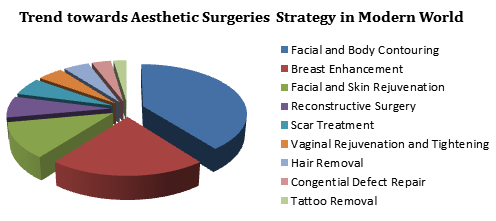
Why Bali?
Bali is an island and province of Indonesia. The province includes the island of Bali and a few smaller neighboring islands, notably Nusa Penida, Nusa Lembongan and Ceningan. It is located at the westernmost end of the Lesser Sunda Islands, with Java to the west and Lombok to the east. Its capital, Denpasar, is located in the southern part of the island. It has a population estimated at 266.79 million in 2018, up from the 2015 estimate of 257 million. About 56.7% of Indonesia's population lives on Java, the most populous island. Tourism-related business makes up 80% of its economy. It is renowned for its highly developed arts, including traditional and modern dance, sculpture, painting, leather, metalworking, and music. The Indonesian International Film Festival is held every year in Bali. In March 2017, Bali is regarded as the world's top destination in its Traveller's Choice award. Being just 8 degrees south of the equator, Bali has a fairly even climate year round. The score measured three water quality parameters: the level of Total Suspended Solids (TSS), Dissolved Oxygen (DO) and Chemical Oxygen Demand (COD). Balinese percussion orchestra music, known as Gamelan, is highly developed and varied. Bali boasts one of the most diverse and innovative performing arts cultures in the world, with paid performances at thousands of temple festivals, private ceremonies or public shows. There are large no. of institutes are offering funds and grants to the researcher under dermatology stream. Many universities cover dermatological studies and helping scientific eminent to spread out their research globally through Indonesia, dermatological journals. Researchers are also curious about the list of dermatological journals and list of dermatological journals Indonesia.
Conference Highlights:
- Skin and Body Fitness
- Therapies for Skin and Body
- Diagnosis of Skin and Body Care
- Clinical and Therapeutic Dermatology
- Cosmetic Dermatology
- Plastic and Reconstructive Surgery
- Genetic Skin Diseases
- Skin Rejuvenation and Resurfacing Recovery
- Acne Pigmentation
- Aging Changes in Skin and Body
- Beauty Clinic and Spa
- Surgical and Non-Surgical –Aesthetic Treatment
- Herbal and Ayurvedic Approaches
- Dermatological Methods
- Dermatological Infections
- Dermatological Fungal Infections
- Prevention and Treatment of Skin and Body
Major Dermatology Associations around the World:
- Asian Dermatological Association Ltd
- Australasian Society for Dermatology Research
- Australasian College of Dermatologist
- British Society of Anti-Ageing Medicine
- British Society for Dermatological Surgery
- British Cosmetic Dermatology Group
- Canadian Dermatology Foundation
- Dermatological Society of Malaysia
- International Society for Dermatologic Surgery
- International Society for Biophysics and Imaging of the Skin
- International Society of Dermatopathology
- European Dermatology Forum Switzerland
- European Society for Cosmetic and Aesthetic Dermatology
- European Society for Dermatological Research
- European Women’s Dermatologic Society
- American Dermatological Association
- American Board of Dermatology Society
- American Society of Dermatology
- American Society of Cosmetic Dermatology & Aesthetic Surgery
- National Dermatology Association
Major Dermatology Universities around the World:
- University of California
- New York University
- University of Michigan Medical School
- Emory University
- Columbia University
- University of Pittsburgh
- Stanford University
- Harvard University
- Thomas Jefferson University
- Johns Hopkins Medical Institutions
- University of California, Berkeley
- University of Chicago
- Yale University
- Duke University
- University of California, Santa Barbara
-
Washington University in St Louis
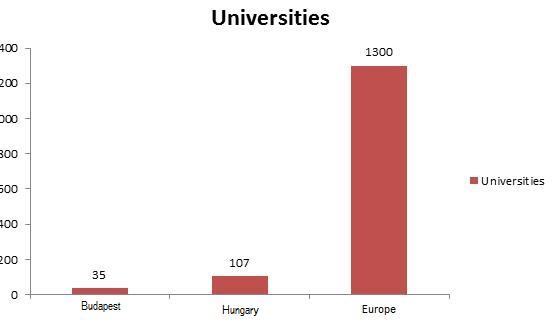
Major Dermatology Societies around the world:
· Dermatology Societies
· Society for Clinical and Medical Hair Removal
· Society of Plastic Surgical Skin Care Specialists
· The Society of Permanent Cosmetic Professionals
· Argentina Society of Dermatology
· Danish Dermatological Society
· French Society of Dermatology
· French Society of Dermatological Research
· German Dermatological Society
· Italian Society of Dermatology
· Japanese Society of Anti-Aging Medicine
· World Trichology Society
· International Society of Hair Restoration Surgery
· New Zealand Dermatological Society
· Turkish Society of Dermatopathology
· American Society for Dermatologic Surgery
· American Society of Dermatology
· American Society for Laser Medicine and Surgery
· Asian Society for Pigment Cell Research
· Australasian Dermatopathology Society
· Brazilian society of Dermatology
· British Society for Dermatological Surgery
· Cosmetic Dermatology Society of India
· European Nail Society
· European society for cosmetic and Aesthetic Dermatology
· International Society for Dermatologic Surgery
· International Society of Dermatology
· International Society for Skin Imaging
· Latin American Paediatric Dermatologic Society
Top Hospitals for Dermatology:
- Kubba Clinic
- The Queen Elizabeth Hospital
- Sakra World Hospital
- New York Presbyterian Hospital
- Shanghai Renai Hospital
- London Bridge Hospital
- UCSF Medical Centre
- Rady Children’s Hospital
- Jeanes Hospital
- Al Zahra Hospital Dubai
- Aesthetics International Dubai
- Lifeline Hospitals
- Eternel Medspa
- Cocoona
- Biolite Dubai
- Aesthetic Clinic
- Kaya Clinic
- Manchester Clinic Medspa
- Obagi Medspa
Related Conferences:
· 19th World Dermatology Congress, May 07-08, 2018 Tokyo, Japan
· Immunology Conference and Evolution of Infectious Disease and Dermatology Conference, May 10-11, 2018, Germany
· 20th On Cosmetology, Trichology and Nutrition, May 14-15,2018 London, UK
· Skin Examinations and Dermatology Conferences, May 17 - 18, 2018, Paris, France
· Cosmetic Dermatology and Hair Care Conferences, June 21-22, 2018 London, UK
· 7th International Conference on Cosmetology & Beauty R&D and Expo Our 1945th Conference Series LLC Ltd July 13-14, 2018 Toronto | Ontario | Canada
· Global Dermatologist Congress, July 23-24, 2018 Moscow, Russia
· 20th World Dermatology and Aesthetic Congress, July 23-24, 2018 Kuala Lumpur, Malaysia
· 14thInternational Conference and Exhibition on Cosmetic Dermatology and Hair Care August 13-14, 2018 Madrid, Spain
· Asia-Pacific Dermatology and Cosmetology Conference, August 16-17, 2018 - Tokyo, Japan
· 10th Clinical and Medical Case Reports Meetings, August 31-September 01, 2018 Toronto, Canada
· Clinical Dermatology Conferences, September 28-29, 2018, San Antonio, Texas, US
· International Conference on Cosmetic Dermatology and Hair Care Oct 24, 2018, Osaka, Japan
· 18th Global Dermatology Congress, Oct 25-26, 2018 Budapest, Hungary
· Veterinary Dermatology and Skin Diseases Conferences, October 29 - 30, 2018, Paris, France
· Clinical Dermatology Congress November 02 - 04, 2018 San Francisco, USA
· Clinical Dermatology and Skin Cancer Conferences, November 5-6, 2018, Amsterdam, The Netherlands
· Aging and Health Wellness conferences, November 05-06, 2018 Abu Dhabi, UAE
· 24th Asia-Pacific Dermatology Conference, November 08-09, 2018 Sydney, Australia
· Dermatologists Annual Meeting 2018, November 12-13, 2018 - Osaka, Japan
· Veterinary Dermatology and Skin Allergy Conferences, November 19 - 20, 2018, London, United Kingdom
· International Dermatology Conference: Skin and Body, November 26-27, 2018 Bali, Indonesia
· World Cosmetic and Dermatology Congress November 26-27, 2018 Bali, Indonesia
· 10th International Conference on Advances in Clinical, Experimental Dermatology & Allergology Our 2789th Conference December 07-08, 2018 Chicago, USA
Related Societies:
USA:
Europe:
Asia Pacific:
Middle East:
Aesthetic Medicine 2017 Report:
International Conference on Aesthetic Medicine was successfully hosted by OMICS Group in Kuala Lumpur, Malaysia during July 6-8, 2017. The theme of the conference was “Advances & Challenges in Aesthetic Medicine” with the purpose to strengthen the future of Dermatology.
Active participation and generous response were received from the Organizing Committee Members, Entrepreneurs, Healthcare professionals, Editorial Board Members of Journals as well as from Eminent Scientists, Talented Researchers, and Young Student Community. The Speakers had made Aesthetic Medicine 2017 a successful event.
The keynote sessions invited lectures, and all the other sessions highlighted the current challenges, issues, opportunities, innovations, and ideas driving the two days event into the path of success with provoking topics like:
· Aesthetic Medicine
· Surgical and Non-Surgical method
· Scars and Wounds
· Acne and Treatment
· Aging Treatment
· Non-Surgical Liposuction
· Hair Transplantation
· Photo Rejuvenation
· Laser Hair Removal
· Face Lifts
ME Conferences offers heartfelt appreciation to the Organizing Committee Members, Entrepreneurs, Healthcare professionals, company representatives and other eminent personalities who supported the conference by facilitating the discussion forums.
ME Conferences is proud to announce the International Dermatology Conference: Skin and Body to be held during November 26-27, 2018 in Bali, Indonesia.
Conference Highlights
- Skin and Body Fitness
- Therapies for Skin and Body
- Diagnosis for Skin and Body Care
- Clinical and Therapeutic Dermatology
- Cosmetic Dermatology
- Plastic and Reconstructive Surgery
- Genetic Skin Diseases
- Skin Rejuvenation and Resurfacing Recovery
- Acne Pigmentation
- Aging Changes in Skin and Body
- Beauty Clinic and Spa
- Surgical and Non-Surgical - Aesthetic Treatment
- Herbal and Ayurvedic Approaches
- Dermatological Methods
- Dermatological Infections
- Prevention and Treatments of Skin and Body Care
- Dermatological Fungal Infections
To share your views and research, please click here to register for the Conference.
To Collaborate Scientific Professionals around the World
| Conference Date | November 26-27, 2018 | ||
| Sponsors & Exhibitors |
|
||
| Speaker Opportunity Closed | Day 1 | Day 2 | |
| Poster Opportunity Closed | Click Here to View | ||
Useful Links
Special Issues
All accepted abstracts will be published in respective Our International Journals.
- Journal of Clinical & Experimental Dermatology Research
- Journal of Cosmetology & Trichology
- Journal of Dermatitis
Abstracts will be provided with Digital Object Identifier by




